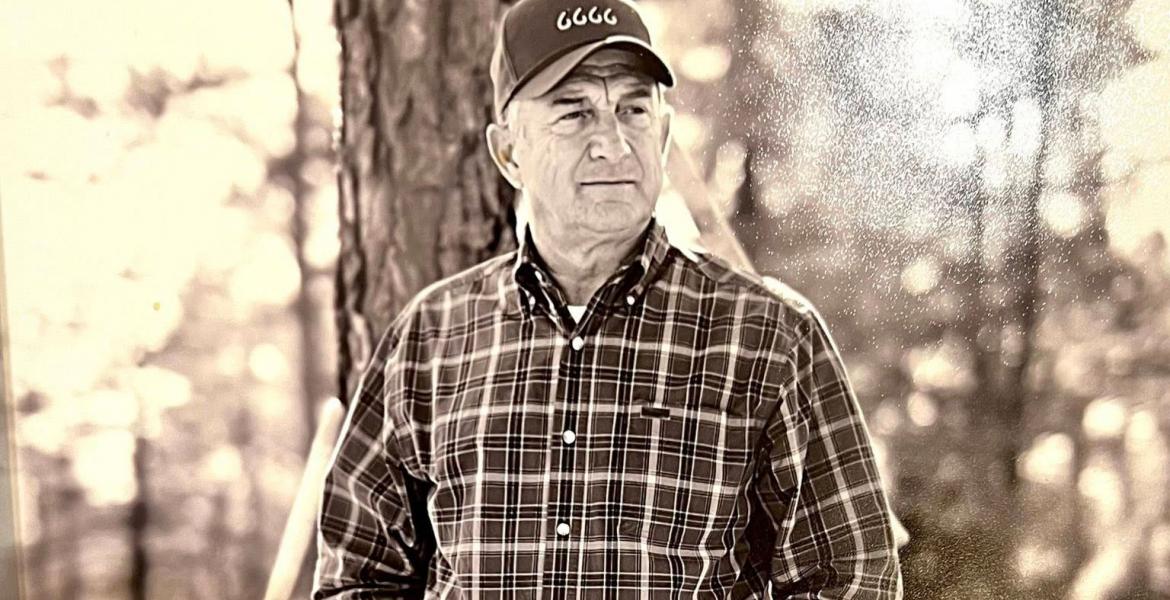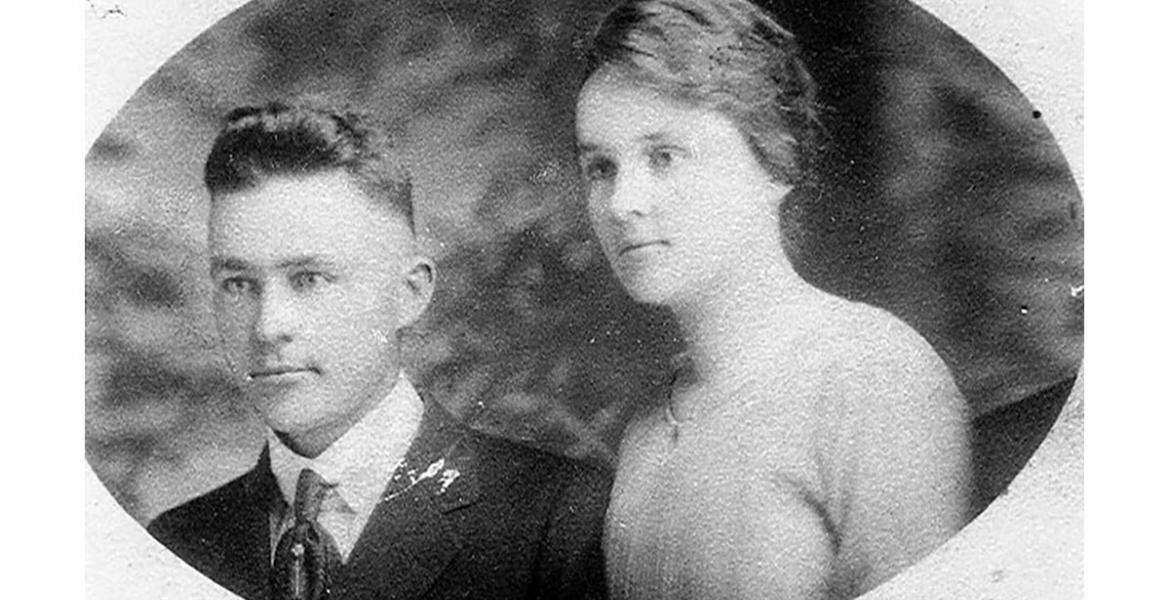Throughout the past 40 years, the artist and multi-talented musician known as Prince has gifted the world an eclectic and impressive body of work.
Ever the recluse and workaholic, Prince has described his creative drive as a curse of sorts in which his musical output is not just a job nor a hobby, but a compulsion.
Prince writes and composes, inventing and reinventing, until his ideal of perfection is achieved, only to step outside of himself soon after and compete against his previous efforts.
Diehard fans of Prince are aware of the copious amount of unreleased tracks that have made their way to the internet and P2P sites. However, until about 20 years ago, if you were lucky enough to acquire a bootlegged recording, you more than likely ended up with a less than desirable audio copy on cassette, sometimes 2nd or 3rd generation (copies of copies), or worse.
Today, with the increased accessibility of bootlegged and unreleased recordings and superior digital editing, fans worldwide are treated to a plethora of quality, rare material.
Two noteworthy collections of such recordings are among a few that were initially intended as commercial releases, “Camille” and “The Black Album”.
In 1987, many Prince fans were still grasping at the cloud that delivered “Purple Rain”.
Where was Purple Rain II, or III, for that matter?
When musical artistry goes (or is considered) “pop”, cookie cutter is everything -- the very antithesis of Prince’s work ethic.
The following two albums would be the answer to a pessimistic fan base and catharsis within an artist’s battle between self awareness and the dead end lure of temporary, profitable conformity.
Retaining but a few “Revolution” members, Prince would subsequently tap master percussionist Sheila E., recruit and round out a horn section with Jazz pioneers Eric and Alan Leeds, and pair himself on stage with the enigmatic, sexy hype-woman known as Cat.
What many dubbed the “Counter-Revolution,” Prince and company would deliver some of the most dynamic, energetic music and live performances in the history Funk music.
CAMILLE (1986-87)
The “Camille” project, recorded in 1986, remains one of Prince’s most alluring and sought after bootlegged recordings.
The musical foundation of this collection is built upon the hallmark sounds of “Funk,” heavy bass lines, hard-hitting rhythmic grooves and a horn section reminiscent of James Brown’s brass lineup, the “JB’s”.
“Camille” is a conceptual album, sung by Prince, from a woman’s point of view, with all music and lyrics attributed to the female alter-ego by word of mouth and credits alike.
Prince’s voice would be manipulated and altered, using a method in which the vocals were sung and recorded in real time over the music, which was played back at a slightly slower tempo.
When the track was complete, and accelerated to it’s regular speed, “Camille” came to life.
Upon hearing the album, fans would immediately recall such vocals on a few B-side singles, within the previous couple of years, the first being “Erotic City” and, two years later, “Love Or $”.
Though Prince had often utilized various pseudonyms, such as Jamie Starr and Joey Coco, when he wrote material for other artists like The Time, Sheena Easton and Kenny Rogers (save for his rock-jazz fusion side project “Madhouse”), he had never lent an actual voice and persona nor released music under any alternative monikers until now.
The symbolism behind the name Camille, remains as much of a mystery today as it did 30 years ago.
Some have theorized that it’s origins derive from the nickname of the infamous mid-nineteenth century French hermaphrodite, Herculine Barbin.
Musically, to this date, Prince fans hadn’t been treated to anything as raw and funky as “Camille”. Since the early ‘80s releases “Dirty Mind” and “1999,” the chatter among many was that after “Purple Rain,” Prince had somehow lost his edge, alienated his black audience, as well as strayed from his funk roots.
After the lukewarm reception of Prince’s psychedelic-laced “Around The World In A Day”, and the Euroclassical influence of “Parade,” “Camille” had a message for the skeptics, nestled within a 1987 tour program:
*”Camille set out to silence HIS critics. No longer daring - HIS enemies laughed. No longer glam, HIS funk is half-assed... Camille mustered all the hate HE was able, hate for the ones who ever doubted HIS game, hate for the ones who ever doubted HIS name. ‘Tis nobody funkier!”
THE MUSIC
1. Rebirth Of The Flesh
Laden with wild, dark guitar riffs and heavy sax to the beat of a linn drum track, “Rebirth Of The Flesh” is a party jam in every respect; and could there be a better title, for an official introduction to the entity known as “Camille”?
2. Housequake
As “Rebirth” comes to a close, an abrupt sound of a record being scratched suddenly interrupts the song.
Camille engages a boisterous party crowd in a back and forth exchange, inciting them into a new dance -- The Housequake.
The drum beat pounds with authority, along with trademark Prince guitar riffs and infectious sax improvisations, as Camille raps and occasionally taunts her audience.
*”Does anybody know about the quake...? (Yeah!) Bullshit!”.
“Housequake” is quintessential funk and groove.
3. Strange Relationship
This song is a revamped leftover from an aborted Prince and The Revolution LP entitled “Dream Factory”.
Prince/Camille stripped away the sitar and conga (musical contributions of Revolution members Lisa and Wendy), and the song became a one-man...ah...one-woman effort.
In this track, Camille wrestles with a love/hate relationship.
It’s a journey though the internal conflict and mixed emotions of a sadistic, yet remorseful lover.
One moment she delivers lines like like *”I guess you know me well. I don’t like winter, but I seem to get a kick out of doing you cold”, followed by others like *”I take all the blame, baby I’m sorry”.
Full of angst, contradictory inclinations and misappropriated rage, “Strange” is an uptempo, punchy groove, which could just as easily get people dancing as solemnly identifying with their own tumultuous love life.
4. Feel U Up
The title of this track pretty much sums up the content.
From the first few measures this number is a pole dance waiting to happen.
The beat pulsates as the horns of Eric Leeds and Atlanta Bliss lend their stylings to Camille’s flirtatious crooning.
There’s no romance here, no heartfelt yearning for commitment -- just an outright sexual solicitation of a brazen woman who likes what she sees and takes what she wants, and why in the hell not?
This song wouldn’t see the light of day (commercially) until 1989, on the B-side of the Batman single “Partyman”.
5. Shockadelica
The title of this track is said to have been “lifted” from R&B artist, Jesse Johnson’s album, of the same name.
Prince allegedly didn’t think much of Jessie’s album, but considered the name to be ingenious.
Never passing up a chance to one-up a former colleague and employee, Prince handed the title to Camille and funk ensued.
“Shockadelica,” musically, is a haunting, yet powerfully funky piece about a vamp seducing her way into the minds of men.
She is a Trojan Horse, offering her charms and beauty before psychologically destroying her lovers.
Tragic and disturbing, the listener may possibly overlook the song’s message, as they’re distracted with the song’s muscular beat and Prince’s wailing guitar -- and that may very well be the intention.
This song would ultimately be released (commercially) in 1987, as the B-side to “If I Was Your Girlfriend” (another “Camille” track, which was included in the album “Sign O’ The Times”).
6. Good Love
“Good Love” would eventually find its way to the “Bright Lights, Big City” soundtrack, in 1988.
It’s a catchy tune, a bit brighter and innocent than much of the rest of the album; Sheila E., Susannah Melvoin and Jill Jones lend their backing vocals in this bubbly ode to Camille’s lover.
**”I’ll have another glass of you, this time on the rocks”.
Optimism and joy encompasses this track, as well as a Gustav Mahler Symphony No. 3 reference and interpolation for good measure.
This track would be included on a four- CD collection of previously unreleased and remixed material entitled “Crystal Ball” 12 years later.
7. If I Was Your Girlfriend
A consensus of exactly what this song is about has never been reached. As we listen to the lyrics, could we deduce that Camille is pleading to a lover or friend for a closer, more intimate relationship?
It must be added that this song hadn’t seen the light of day (commercially) until 1987, under the name Prince on “Sign O’ The Times”.
If we were a casual listener in 1987, unaware of the enigma known as Camille, we might’ve just assumed that Prince is making his case for a courtship with a lesbian he’s fallen for.
In any case, this song is nothing short of one of Prince’s all-time greatest works.
The sparse arrangement is dominated with a crisp and simple linn drum beat, enticing lo-fidelity synth chords, and complimented with a bass line that sounds a lot like a nod to Sly Stone’s 1969 hit, “Thank You (Falettinme Be Mice Elf Agin)”.
Over this sultry, mid-tempo ballad, Camille/Prince lays out the blueprint for a genuine friendship based on love and mutual respect -- a far cry from most of the themes within the album, where libido is the rule of law.
Where the raunch is lacking, the funkiness and sex appeal certainly is not.
This song, along with “Housequake” and “Strange Relationship,” would subsequently end up on the album “Sign O’ The Times” the following year.
A classic, impressive live rendition of this song, performed by Prince, as Prince may be seen here.
8. Rock Hard In A Funky Place
Upon first glance of the title, one might assume this song to be about a jam session in a popular nightclub.
Read the title again, listen to a few lines, and your second guess about what this song’s about may be the correct one.
Camille delivers her commentary and observations of a visibly “eager” John, who’s stumbled into a brothel.
“Soaked in banana cologne, no wonder you’re all alone”, she teases.
The song slithers along in a waltz-like fashion, with the lyrics belted out in all the stylings of the blues.
Sax master Eric Leeds compliments this track with sleazy Jazz riffs in the background, before Prince breaks out in one of his famed guitar solos to the “rock, rock!” chants of a party crowd.
As this final song of the album fades out it suddenly fades back in, with the band seemingly tuning up their instruments.
Camille is heard asking “What kinda f--k ending was that?”
Most fans, along with myself, would agree -- it’s as funky of an ending as we could’ve expected.
9. Scarlet Pussy
This track was never officially part of the “Camille” collection; however, this Camille-credited essential appeared as a B-side to one of the “Lovesexy” singles, “I Wish U Heaven,” in 1988.
Percussionist Sheila E. lends her vocals to Scarlet, a mid-tempo groove saturated in metaphorical ambiguity as only Prince can deliver.
“pussycat, pussycat...wherefore art thou puppy?”
As with his 1987 B-side banger, “La,La,La..Hee,Hee,Hee,” we’re treated to yet another dog meets cat, dog sexually pursues cat tale of unorthodox animal courtship.
Along with “Scarlet,” fans would catch other Camille cameos in the 1988 B-side “Sex” and the title song of the later, commercially released album “Crystal Ball” in 1997.
THE BLACK ALBUM (1987)
The lore surrounding “The Black Album” (unofficially known to some as “The Funk Bible”), is equally as intriguing as that of “Camille”.
Disillusioned with Warner Bros. and their insistence on releasing a 10-12 track album once a year, rather than epic productions containing three or four discs on a whim, Prince was at the beginning of a battle with his label which would ultimately effect his creative output unto the late ‘90s.
To the exec’s, this was business.
The oversaturation of material within small increments of time simply didn’t allow the money to roll in accordingly for each project produced.
To Prince, this was his art.
Though 1987’s “Sign O’ The Times” is considered to be one of his best albums to date, it was in fact a butchered project, consisting of odds and ends of an intended three-disc album, entitled “Crystal Ball,” with a handful of the aforementioned “Camille” material.
While “Sign O’ The Times” was indeed a great piece of work, it was, for the most part, considered to be yet another “pop album”.
Determined that he would produce a commercially successful, full-fledged, funk masterpiece, Prince would once again become inspired into delivering one of the greatest collections of music to date.
This aspiration would prove to be a fateful one, triggering one of many conflicts Prince would have with his record label, the music industry, and most notably, himself.
Allegedly—and I must stress the word allegedly—associates within the Prince camp had given various testimonials about a sour experience Prince had while tripping on Ecstasy (MDMA).
In short, the visions he saw that night were deeply religious, they revealed omens, and insinuated that the “Black Album” was a creation of evil ad nauseam.
Prince, in turn, decided to shelve the album, though roughly 100 or so copies had already been distributed throughout the world to various DJs and media outlets, not to mention those given to staff members and associates within the Warner camp.
The rumors, the curiosity and the demand would set into motion a snowball effect that few bootlegged recordings had ever seen.
Remember, this was pre-internet, pre-P2P sites.
Before its subsequent commercial release in 1994, it wasn’t at all uncommon to see the asking price for an original copy of “The Black Album” soar well into the thousands.
Today, Black is considered to be the most bootlegged album of all time.
With “The Black Album” shelved indefinitely, there remained a void to fill. What fans were offered in 1988, in its place, was a so-so effort known as “Lovesexy.”
The album, while a decent piece, was heavily steeped in the pseudo religious dogma that seems to plague His Royal Badness and his musical output to this day.
Prince seemingly wanted his fans to know as well that his funky demons had since been purged, and on the 0:27 mark of the 1988 video Alphabet Street, a message momentarily flashes which reads “Don’t buy the Black Album, I’m sorry.”
The message would materialize on screen and disappear within a split second, and so the chances of anyone noticing this was negligible, at best.
The following tracks are recordings produced in and around 1987, a period which fans consider to be one of Prince’s most provacative periods, creatively and musically.
This is hunger and anger, passion and joy; it’s unadulterated carnality in the form of a party.
This is Funk.
THE MUSIC
1. Le Grind
Think, Hokey Pokey meets Kama Sutra.
This instructional jam is in the same vein as “Housequake,” with the only difference being the need for a willing partner.
*”This funky beat is gonna show you what your hips are made for.”
Dominated by Prince’s trusty horn section, the crack and thump of the linn drums and the ever present party crowd’s backing vocals, this groove has the propensity to turn any dance floor into a makeshift bedroom.
It’s musical hedonism, at it’s best.
2. Cindy C.
This track was Prince’s lust-fueled, love letter to the supermodel of the day, Cindy Crawford.
Rumors surrounding this song suggest that its conception was inspired by an event in a nightclub, when Ms. Crawford turned down an invitation/solicitation by Prince.
*”Cindy C., will you play with me? I will pay the usual fee.”
Prince, lyrically, wears his heart on his sleeve here, though propositions Cindy with the candid approach one would use in flagging down a hooker, rather than a supermodel at the top of her game.
Sheila E. spices up this uptempo piece with her sultry, accompanying/backing vocals and dexterous percussion mastery.
3. Dead On It
This track is a tongue-in-cheek jab at the time’s emerging genre known as “gangsta rap”.
Prince plays the part of the cliche, arrogant rap artist, boasting, *”I got a gold tooth, cost more than your house.....got diamond rings, each one the size of a mouse”.
The music in this track has the swagger and vibe of D.C. “Go-Go” (minus the cow bell), but lyrically comes off as pure parody.
While entertaining and catchy, many fans dismissed this as a throwaway and skipped on to the next track within minutes of hearing it.
4. When 2 R In Love
This ballad stands up as an all-time Prince classic.
As fans recollect the wealth of Prince’s slow jams throughout the years, they’d most likely recall gems such as “Do Me Baby,” “International Lover” and “Electric Intercourse”.
This exquisite number is definitely in my top 10 of the same category.
It’s nothing short of poetic genius.
A posted line or two wouldn’t begin to represent this piece as the prolific work of art it is. You simply need to hear it to appreciate its beauty and value.
“When 2 R In Love” would become the one and only holdover from The Black Album and wonderfully compliment Prince’s “Lovesexy” album the following year.
5. Bob George
Just as you’ve been lulled into a state of euphoric sentiment and amorous inclinations with the previous track, “Bob George” rattles the living shit out of you with the violent imagery of a jealous, jaded lover confronting his mate with her acts of infidelity.
Prince (in a vocally manipulated, low pitch) plays the part, of a hot tempered jilted boyfriend:
*”Bob...ain’t that a bitch? What’s he do for a living, manage rock stars? Who? Prince? That skinny motherf--ker with the high voice?”
The track is a simple one-two punch of a drum beat, accompanied with electric guitar riffs, as Prince’s character verbally dresses down his lady, before flying into a rage and breaking out a high powered firearm.
*”Bob, if you out there, lemme see you dance!”, Prince taunts, as he lets loose a hail of gunfire.
The song concludes with a shootout between Prince’s thug persona and responding police officers.
Yes..from the previous song’s *”let’s drown each other in each other’s emotions” to *”Don’t you know Imma kill you now?!”.
This speaks volumes of where Prince was, creatively, and mentally, for better...for worse.
6. Superfunkycalifragisexy
While “Le Grind” was a dance, Super was a state of mind.
*”If you drink too much, your skin will be sensitive to the touch, the first person that touches you..you wanna ....”
Well..you get the idea.
As Prince delivers an explicit agenda of the night’s activities, the synth chords run wild, with Sheila E. supplementing Prince’s funky drum programming and guitar rhythms.
A club banger, and house party staple in every sense.
7. 2 N--s United 4 West Compton
Within the few years preceding “The Black Album,” Prince had dedicated much of his efforts into rock/funk-fusion experimentation, as with his side project Madhouse.
“West Compton” is one such track.
This song has all the hallmarks of the intense live jam sessions Prince has become known for.
The song starts out with Prince and a handful of people engaged in a 35 second awkward verbal exchange, which could best be described as a bar room full of drunken pimps and prostitutes.
Sheila E.’s on percussion, Dr. Fink works his usual magic on synth, Atlanta Bliss and Eric Leeds supply the horns, and the icing on the cake -- Prince in rare form on bass guitar.
If there were a Mount Rushmore of Funk pinoeers, between the busts of James Brown, Sly Stone and George Clinton, Prince’s likeness would compliment the monument, with jams like this lending credence to such a tribute.
8. Rock Hard In A Funky Place
As the “Camille” project never saw an official release, “The Black Album” would be the only incarnation in which “Rock Hard” would be offered commercially.
Just as it rounded off “Camille,” it too, is a perfect fit for this collection.
For those fans interested, a casual web search could yield an abundance of rarities, live shows and unreleased songs alike.
Though it’s always best to support you favorite artists, by purchasing commercially available releases, there is a wealth of material out there which has not, nor will ever be offered to the general public, and is simply too good to ignore.
On Sept. 15, 2015, Prince released his 38th studio album “Hit ‘N’ Run”. It’s a mixed bag of funk, R&B, electronic dance and his trademark electric/bass guitar expertise. This album is a must-hear, and one of his best efforts of the last 15 years.
For all of the praise and adulation fans and musical contemporaries can express about Prince, there’s one commonality that has held our interest over the past few decades—simply anticipating what Prince will do next.
Subscribe to the LIVE! Daily
Required






Post a comment to this article here: